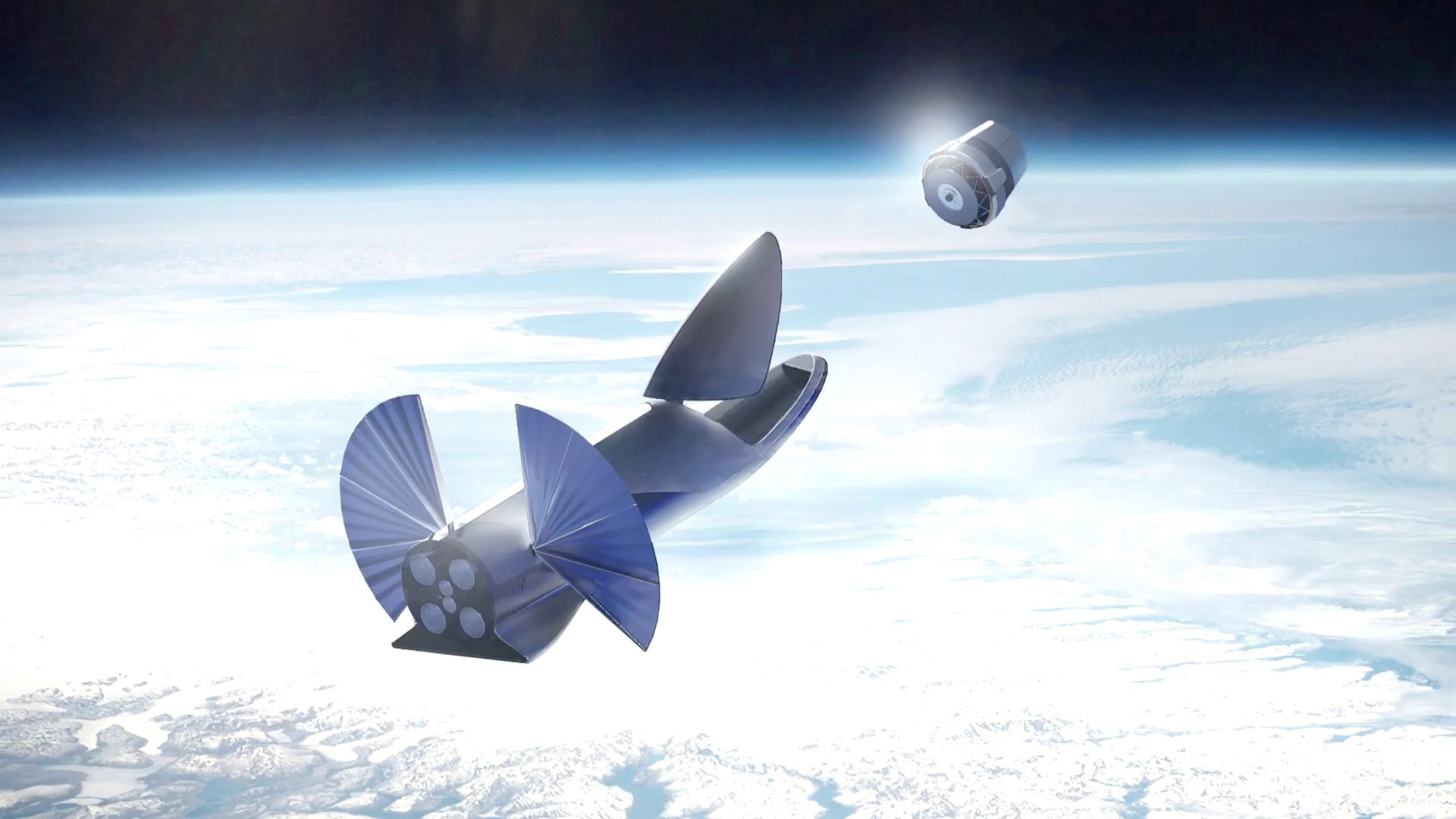At their South Texas Launch Facility, just outside of the village of Boca Chica, SpaceX is gearing up to test the Super Heavy, the booster element of their Starship launch system. This massive reusable first stage rocket will be responsible for sending the Starship orbital vehicle to space, where it will deliver satellites to orbit, payloads and people to the Moon, and (if all goes as planned) the first human settlers to Mars.
According to a recent statement issued by SpaceX founder Musk Musk, the Starship could also be used to “chomp up debris” in Earth orbit. As usual, the statement was issued via Twitter, where Musk was once again addressing questions posted by followers and fans. The topic arose after Musk shared the latest updates about Starlink, one of a handful of satellite constellations that are bringing broadband internet services to every corner of the planet.
Specifically, Musk was sharing the latest artwork that will adorn the Starlink satellite covers, the visor-like appendages that make Starlink satellites less visible in orbit. Henceforth, these covers will feature a diagram of a transfer orbit from Earth to Mars, a clear reference to Musk’s long-term vision of colonizing the Red Planet. This is not unlike the terms of service for Starlink’s public beta test back in Nov. 2020, where participants had to acknowledge Mars as a “free planet.”
In any case, a user who goes by the Twitter handle Hide yo memes (@REQNews) asked if SpaceX had any other mitigation measures in mind to reduce the problem of space debris. Specifically, the user referenced the Kessler Syndrome (named for NASA space debris expert Don Kessler) which states that once orbital debris reaches a certain critical mass, it will create a chain reaction of collisions and more debris.
According to their initial FCC filing (issued in Nov. of 2016), SpaceX requested a license to operate a constellation of 4425 non-geostationary satellites (NGS) in orbits of between 1100 and 1300 km (680 and 800 mi). By Nov. of 2018, SpaceX announced that they were adjusting this plan and now wanted to send their first 1600 satellites to an altitude of 550 km (350 mi), where they would deorbit and burn up in the atmosphere sooner.
As of June 30th, when the latest batch was launched, SpaceX has sent 1,740 Starlink satellites to space (1635 are currently active) which orbit Earth at altitudes of 540 to 570 km (335.5 to 354 mi). However, lowering the orbit of satellites is hardly a long-term solution. At present, the ESA indicates that satellites are being deployed at a rate of 70–90 launches a year, with a growing number of launches injecting 30 or more small satellites at a time.

Musk’s solution, as offered, would be to utilize the Starship’s fairing, the clamshell-like structure the payload is integrated into. In its standard configuration, the payload fairing measures 9 m (29.5 ft) in diameter, which allows for a greater cargo volume than any other launch vehicle (past or present). As it states in the Starship User Guide:
“Once integrated, the clamshell fairing remains closed through launch up until the payload is ready to deploy… To deploy the payload, the clamshell fairing door is opened, and the payload adapter and payload are tilted at an angle in preparation for separation. The payload is then separated using the mission-unique payload adapter. If there are multiple payloads on a single mission, a rotating mechanism can be provided to allow each satellite to separate with maximum clearance.”
Configured for debris, the Starship would likely open its fairing door and rely on inertia to scoop up and trap debris in its payload compartment. This is not unlike how Blue and Humpback whales feed, swimming into schools of krill, crustaceans, or small fish with their mouths open and clamping them shut. With an internal volume of 1,100 m3 (38,800 ft3), the fairing could accommodate debris eight times the size of a Crew Dragon (with the trunk).
Naturally, the Twitterverse responded with their usual mix of jibes and feedback (my favorite being that SpaceX should paint these Starships to look like Pacman!). In any case, a space junk-clearing Starship could be an innovative idea and a potential solution to the space debris crisis. Given Musk’s high-profile involvement in the broadband satellite market, a solution that comes from his corner also makes good business sense.
Further Reading: Starlink

